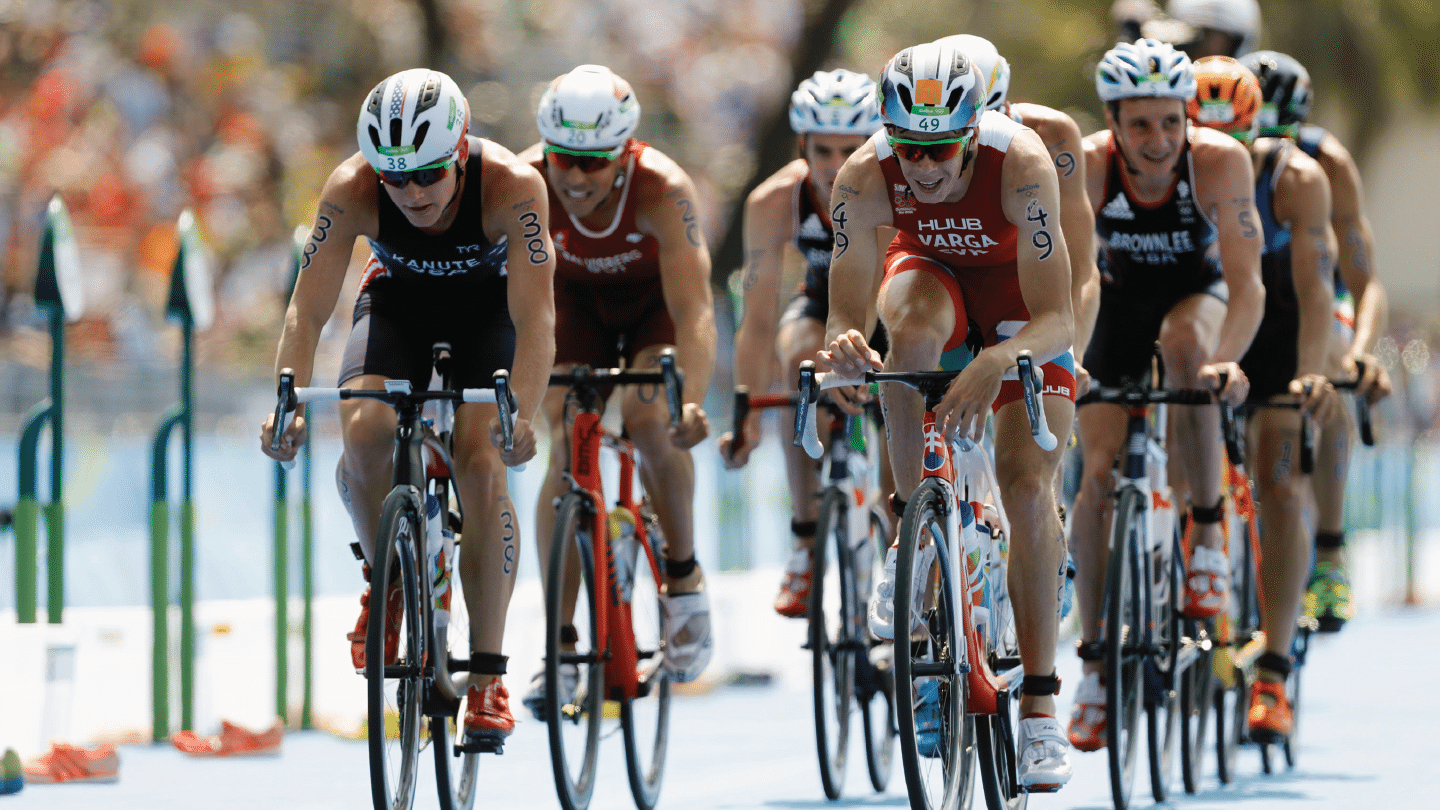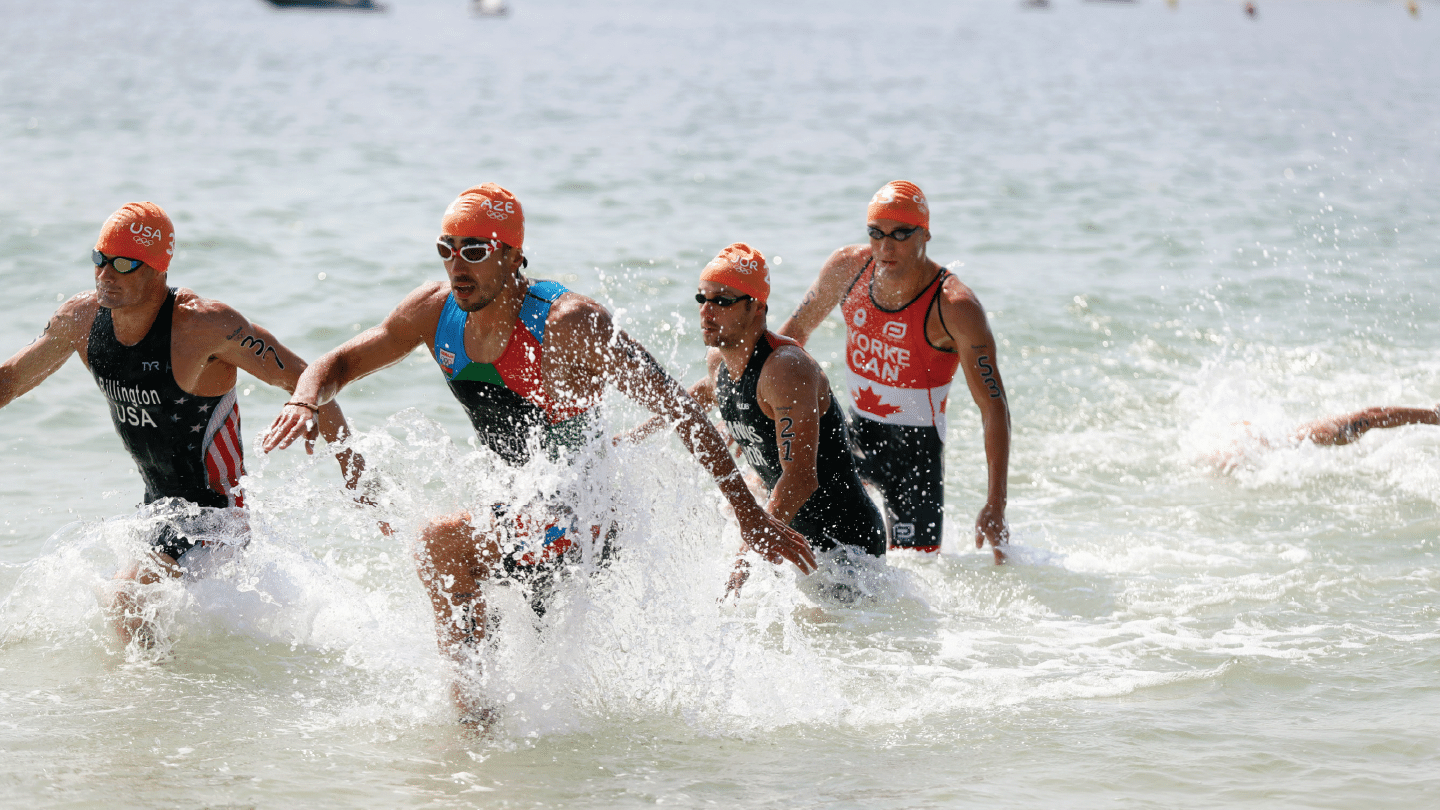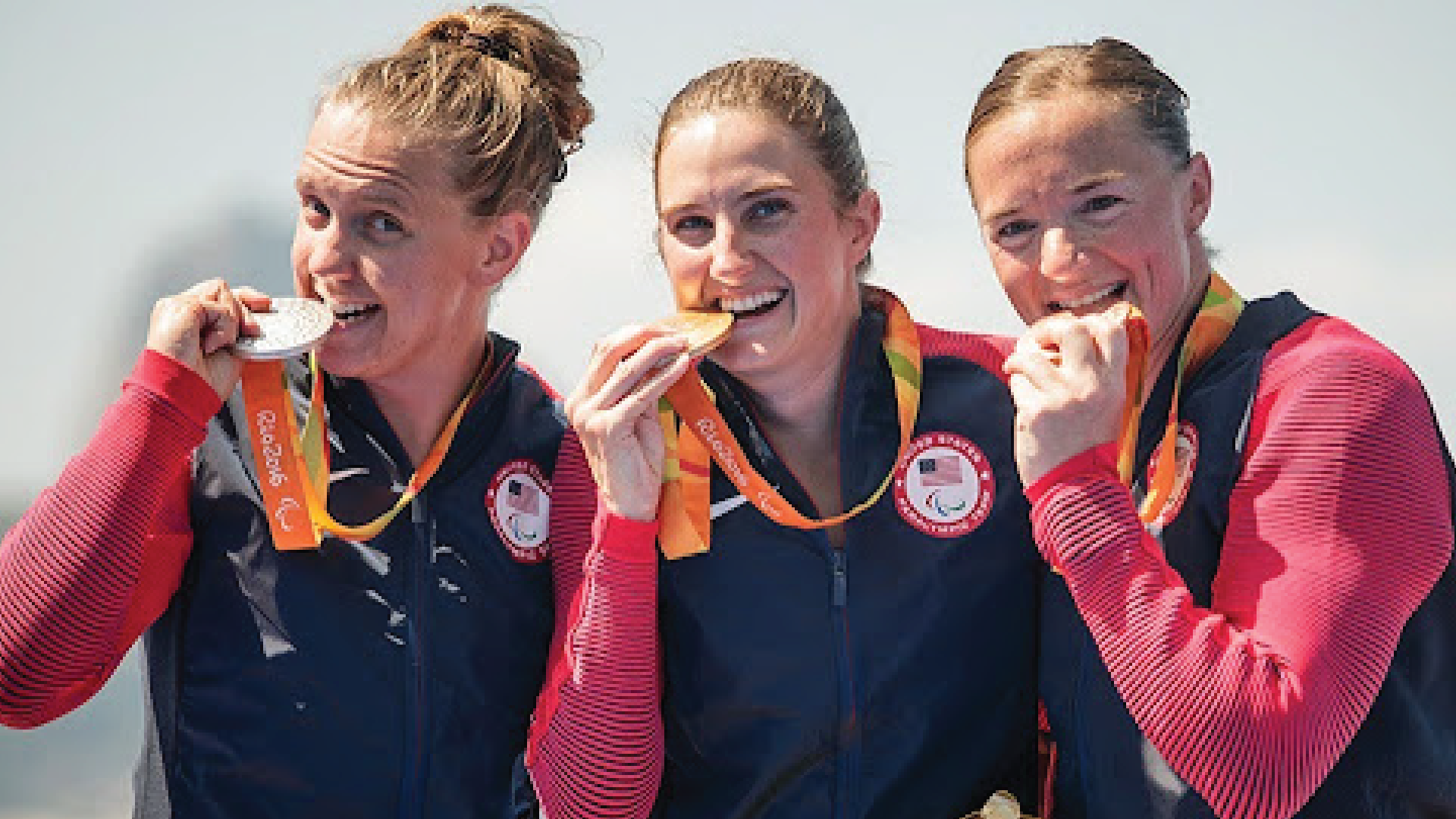Winning bronze felt like gold to Melissa Stockwell (right) at Rio 2016.

Triathlon and Paratriathlon races are multisport challenges with 3 event milestones: swimming, cycling, and running. From the intense physical demands to the mental toughness and inspiring stories of triumph, keep reading as we uncover the achievements of triathletes and para-triathletes at the U.S. Olympic & Paralympic Museum in Colorado Springs, CO.
Triathlons rapidly grew in popularity throughout the 1980s and 1990s after starting the sport’s debut in the 1970s, with the first official triathlon taking place in 1974. One of the most common formats is the Olympic distance triathlon, which includes 1.5 km swim, a 40 km bike ride, and a 10 km run showcasing the sport’s versatility and athletes endurance and strength. Triathlons also feature various other distances, such as the sprint distance (750 m swim, 20 km bike, 5 km run) and the Ironman (3.8 km swim, 180 km bike, 42.2 km run), further highlighting the diverse challenges athletes face.
Triathlon was first introduced to the Olympics at the 2000 Sydney Games, which featured men’s and women’s individual events. The triathlon competition continued at the 2008 Beijing Olympics, where it was part of the official program. The 2020 Tokyo Olympics showcased both individual and mixed relay triathlon events, further expanding the sport’s presence in the Olympic arena.
Several team U.S.A. athletes competed in Olympic triathlon events. Gwen Jorgensen won gold in the women’s triathlon at the 2016 Rio Olympics.


Paratriathlon was introduced to the Olympics at the 2016 Summer Paralympics in Rio de Janeiro. However, before para triathlon was announced as a Paralympic sport, it had been challenged at various international events, including the World Championships organized by the International Triathlon Union (ITU).
The official recognition by the International Paralympic Committee and its inclusion in the Paralympics raised awareness of the new sport for those with disabilities.
There were six medal events for Paratriathletes at the 2016 Olympics in Rio de Janeiro, representing different categories based on the type of athletes’ physical impairments. These categories included:
Several U.S. athletes competed in Olympic paratriathlon events. Grace Norman won gold in the PTS5 category at the 2020 Tokyo Paralympics and the 2016 Rio Paralympics, making her a two-time Paralympic champion. Kendall Gretsch won gold in the PTS2 category at the 2020 Tokyo Paralympics, and Allysa Seely won gold in the PTS2 category at the 2020 Tokyo Paralympics.